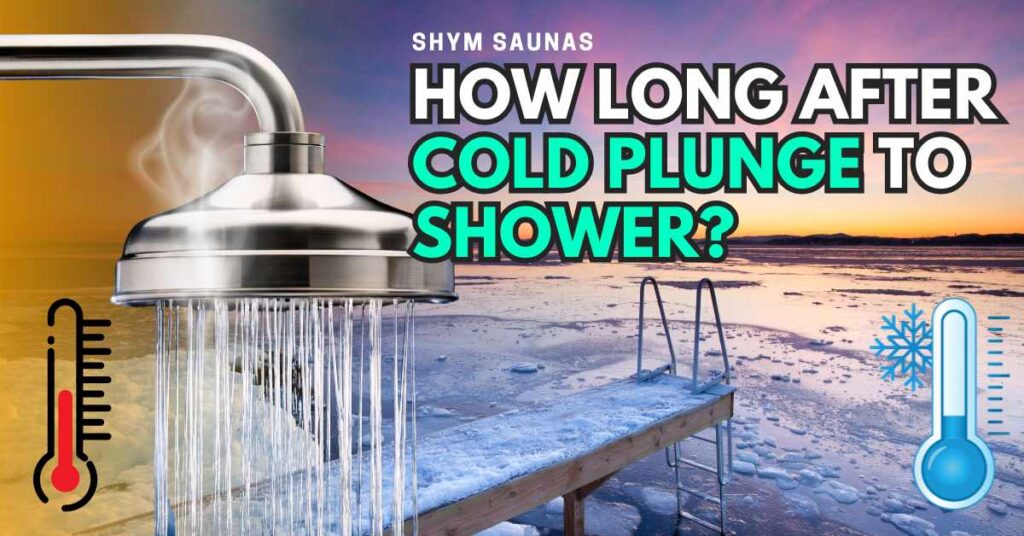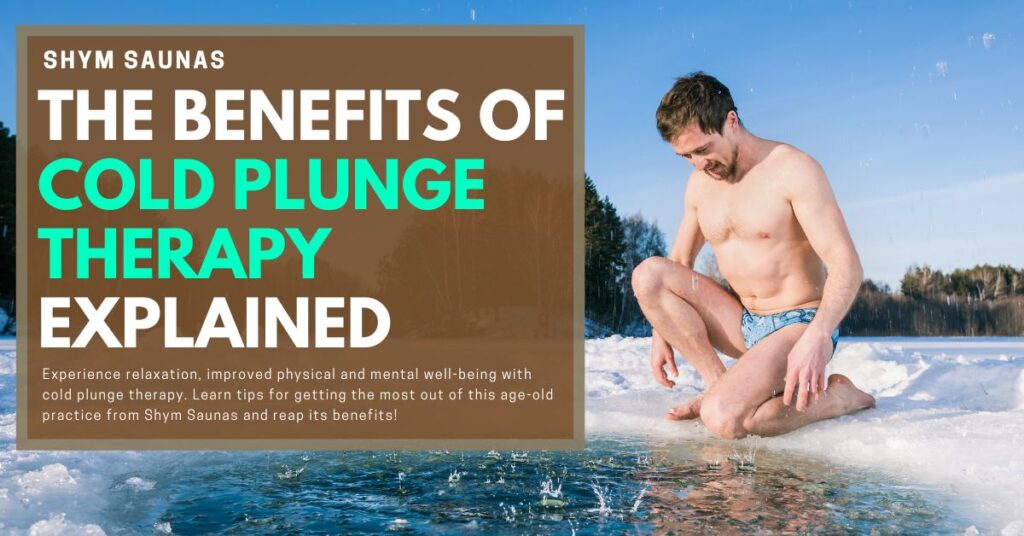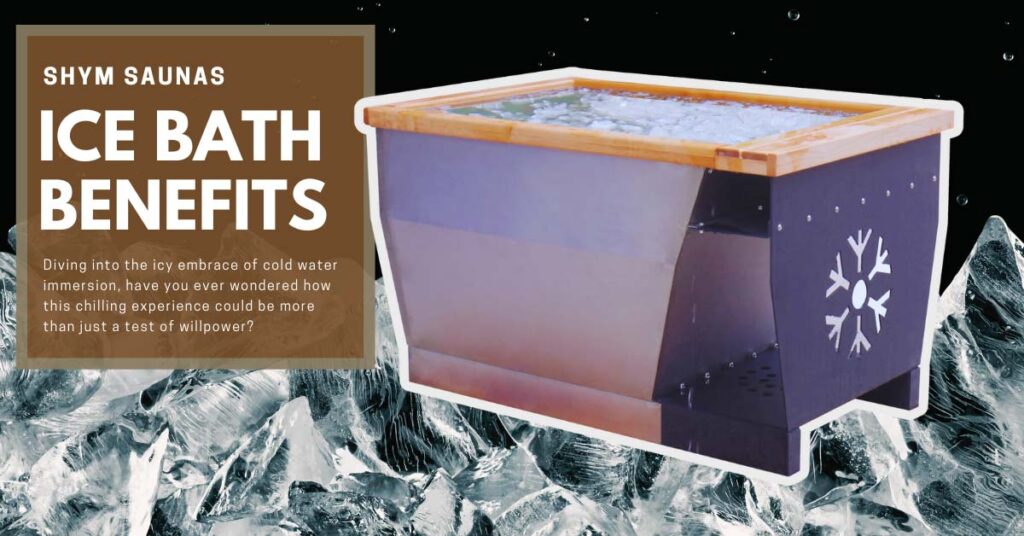When you step out of the icy embrace of a cold plunge, your body initiates a natural recovery process, counteracting the shock of the cold with a gradual return to its baseline temperature.
The question then arises: How long should you wait after a cold plunge to shower?
This guide will walk you through the optimal practices for post-cold plunge recovery, ensuring you harness the full spectrum of benefits from this invigorating therapy.
Key Takeaways
- Wait Before Heating: Postpone hot showers to allow your body to naturally adjust its temperature, enhancing the recovery and benefits of cold therapy.
- Embrace Gradual Warming: Utilize sun exposure, warm layers, and movement to gently raise your body temperature.
- Nourish and Hydrate: Warm beverages and nutrient-rich foods can be crucial in your post-plunge recovery, offering both warmth and essential nutrients for recovery.
- Listen to your body and adjust your post-plunge routine to suit your recovery needs.
Understanding the Immediate Reaction to Cold Plunge
Upon immersion in a cold bath, your body undergoes vasoconstriction to conserve heat, alongside a temporary rise in heart rate and blood pressure. This stress response, albeit short-term, triggers the release of endorphins, boosting mood and energy.
No wonder ice baths are often intriguing to pregnant women, curious if they can harness these benefits during their pregnancy.
Such effects underscore the importance of not undermining the process by hastily warming up through external means like a hot shower.
How Long After Cold Plunge to Shower? Don’t Rush the Warm Shower
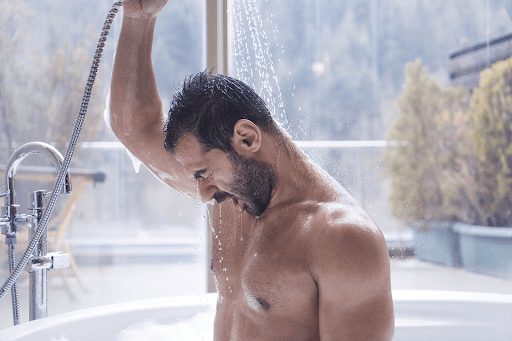
Experts caution against immediately jumping into a warm bath or shower after a cold plunge. The shock of transitioning too quickly from cold to hot can counteract the benefits you’ve gained from your ice bath.
Instead, allowing your body to naturally and gradually increase its temperature is recommended. This approach helps in stabilizing the body’s physiological responses, ensuring a balanced recovery.
Alternative Warming Methods
Before considering a shower, explore other methods to warm up:
- Stretch or Move: Light activities like stretching, walking, or yoga can help accelerate the body’s natural warming process. Movement increases blood flow and aids in gradually raising body temperature.
- Sunbathing: If the weather permits, standing or sitting in the sun can be a gentle, natural way to warm up.
- Warm Beverages and Foods: Consuming something warm, like tea, coffee, or soup, warms you from the inside out. Foods rich in healthy fats, protein, and iron are also beneficial for heating up.
- Dress in Warm Layers: After drying off, putting on warm clothing can help your body retain the heat it starts to generate post-plunge.
Drawbacks of Hot Showers After a Cold Plunge
Contrast Therapy Considerations
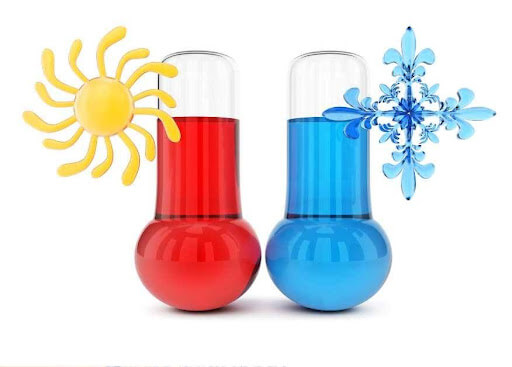
While contrast therapy—alternating between hot and cold temperatures—has its merits, it’s essential to understand the specific context in which it is beneficial.
A hot shower immediately following a cold plunge can potentially negate the positive stress (eustress) introduced by the cold exposure. This abrupt shift can lead to dilated blood vessels, reversing the beneficial effects of vasoconstriction, and possibly leading to discomfort or a diminished response to the cold therapy.
Potential Impact on Recovery and Adaptation
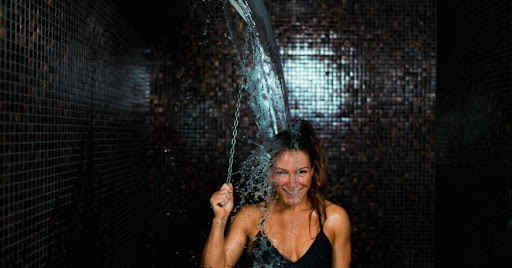
The muscle relaxation and blood vessel dilation from a hot shower might also interfere with the recovery and adaptation processes initiated by the cold plunge. This includes reduced inflammation and muscle soreness benefits, as the body’s natural recovery mechanisms are interrupted.
Considerations and Precautions
Before incorporating cold plunges and subsequent warming practices into your routine, consider the following precautions:
- Consult with a healthcare professional, especially if you have underlying health conditions or are new to cold exposure therapy.
- Limit your time in the ice bath to avoid risks like hypothermia. For beginners, a duration of at most 5-10 minutes is advisable.
- Monitor your body’s response to both cold exposure and the warming process. Everyone’s tolerance and optimal recovery methods can vary.
- Avoid immediate hot showers after a cold plunge to prevent negating the benefits of the cold exposure. If you opt for a shower, gradually increase the temperature.
- Practice safety and mindfulness throughout your cold plunge and warming routine. Be aware of your body’s signals and adjust accordingly.
The Verdict on Shower Timing
Given the insights and recommendations, the optimal approach is to wait before taking a hot shower. Allow your body to gradually return to its normal temperature naturally.
Allow the cold plunge water to weave its therapeutic spell, diminishing inflammation, expediting recovery, and rejuvenating your muscles. Later, when your body has fully embraced the benefits of the cold, indulge in a warm shower for relaxation.
This waiting period can vary depending on individual responses and the ambient temperature. Generally, waiting at least 20 to 30 minutes, or until you’ve comfortably adjusted to the room temperature, is a prudent guideline.
The Hardwood Timber Outdoor Shower Column: A Perfect Pre-Plunge or Post-Plunge Feature
After understanding the benefits and the proper way to warm up after a cold plunge, let’s introduce the perfect addition to your outdoor bathing experience: The Hardwood Timber Outdoor Shower Column.
Hardwood Timber Outdoor Shower Column (Aspen Wood)
This stylish and efficient outdoor shower is ideal for a quick and refreshing rinse, enhancing your pre-plunge or post-cold plunge routine or providing a soothing start before you dive in. Whether connecting to a garden hose for an instant cool-down or opting for a more permanent setup with both hot and cold water intakes, this outdoor shower adapts to your needs.
FAQs
Can I take a cold shower instead of a hot one after a cold plunge?
Yes, a cold shower can further enhance the benefits of cold exposure therapy without shocking the body with a sudden temperature change.
How long should I wait before taking a shower after a cold plunge?
It’s recommended to wait at least 20 to 30 minutes or until you feel naturally warmed up and comfortable at room temperature.
What are the signs that I’m ready to shower after a cold plunge?
Signs include feeling less chilled, having warm extremities, and overall comfort in room temperature without shivering.
Can a warm shower negate the benefits of a cold plunge?
While a warm shower can provide comfort, it can potentially diminish some of the cold plunge’s immediate physiological benefits if taken too soon. Balance and timing are key.
Conclusion
Understanding How Long After Cold Plunge to Shower is crucial in maximizing the therapeutic benefits of cold water immersion. By respecting your body’s natural recovery process and incorporating other warming techniques, you can enhance the effectiveness of your cold plunge routine. As with any wellness practice, individual experiences may vary, so listening to your body and adjusting accordingly is essential for achieving optimal results.

